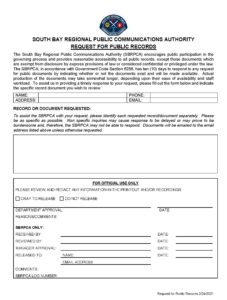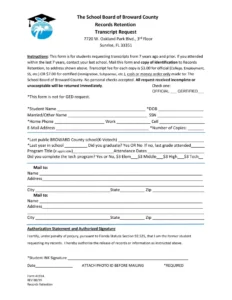Leveraging such a form empowers individuals to exercise their right to access and control their personal information. Clear communication reduces ambiguity in requests, leading to more efficient processing and quicker responses. Further, pre-defined structures help agencies manage requests effectively, minimizing administrative burdens and ensuring consistent application of privacy regulations.
This foundation of understanding the function and advantages of structured access requests paves the way for deeper exploration of related topics, such as specific regulations, practical application, and strategies for maximizing the effectiveness of these requests. The following sections delve further into these crucial aspects.
Key Components of a Privacy Act Request
Effective access requests require specific information to ensure clarity and expedite processing. The following components are crucial for a complete and successful submission.
1: Individual Identifier: Full legal name, including any previous names, and other identifying information such as date of birth, place of birth, and social security number are typically required for verification purposes.
2: Agency Identification: The specific government agency holding the requested information must be clearly identified. This includes the agency’s full name and any relevant subdivisions or departments.
3: Information Sought: A detailed description of the specific records being requested is essential. Vague requests can delay processing. Providing dates, specific document titles, or related keywords can help narrow the search and improve accuracy.
4: Request Justification (Optional): While not always mandatory, providing a reason for the request can be helpful, especially for complex or unusual requests. This context can assist the agency in understanding the request’s nature.
5: Contact Information: Current mailing address, phone number, and email address are necessary to facilitate communication regarding the request’s status and delivery of the requested information.
6: Signature and Date: A signed and dated request confirms the individual’s identity and the request’s validity. Some agencies may accept electronic signatures.
Accurate and comprehensive requests containing these key elements increase the likelihood of successful retrieval of desired information while demonstrating due diligence and compliance with established procedures.
How to Create a Privacy Act Request
Creating a well-structured request ensures efficient processing and increases the likelihood of receiving the desired information. The following steps outline the creation process.
1: Obtain a Template: Many government agencies provide downloadable templates specifically designed for these requests. Utilizing an agency-specific template ensures compliance with their particular requirements.
2: Identify the Agency: Determine the precise government agency holding the desired records. This may require research if the information is held by multiple agencies.
3: Complete Personal Information: Accurately provide all requested personal identifiers. This typically includes full legal name, date of birth, place of birth, and social security number.
4: Specify the Records: Clearly describe the specific information being sought. Provide as much detail as possible, including dates, document titles, or keywords relevant to the records.
5: Justify the Request (If Applicable): While not always mandatory, offering a reason for the request can be helpful, particularly for complex or uncommon requests. This context helps the agency understand the request’s nature.
6: Provide Contact Information: Ensure accurate and current contact information is provided, including mailing address, phone number, and email address, for communication and delivery of information.
7: Sign and Date: A signed and dated request is typically required. Some agencies may accept electronic signatures. Confirm the agency’s specific requirements.
8: Submit the Request: Follow the agency’s instructions for submitting requests. This may involve mailing a physical copy, submitting an online form, or sending the request via email.
Meticulous completion of these steps, using precise language and complete information, maximizes the effectiveness of the request and facilitates timely processing by the agency.
Understanding the structure and purpose of standardized access request forms empowers individuals to exercise their right to access and control personal information held by government agencies. Precise completion of these forms, including accurate personal identifiers, specific descriptions of the information sought, and clear contact details, facilitates efficient processing and timely responses. Utilizing agency-specific templates ensures compliance with established procedures and maximizes the effectiveness of these requests.
Access to personal information promotes transparency and accountability within government agencies, contributing to a more informed citizenry and a stronger democratic process. Leveraging these established mechanisms for information access empowers individuals to engage actively in protecting their privacy rights and understanding how their information is managed.


